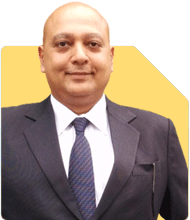Hello Sushil, my son hasn't completed any UG course inspite of getting admission into 3 premier colleges in India. Now he wants to apply for a course in MIT or Stanford. He has scored 117/120 in TOEFL. Expecting his SAT result by this month end. Can you please guide us with the admission process ? Also is there any organization which can assist him with scholarship for the program. He is an extremely intelligent and hardworking student. It is just that the education system here wasn't convincing him to finish what he started.
Ans: Hello,
First and foremost, thank you for getting in touch with us. I am glad to hear about your son’s plans on enrolling in a course at leading American universities viz., MIT or Stanford. I would like to inform you that it’s very likely for many students to alter their educational pathways. Similarly, remember that applications made by students who have chosen to embark on different education paths are taken into account by the above mentioned universities. Follow these steps to ensure a successful admission process:
1. Education Prerequisites: The education prerequisites for each university is unique. I would suggest that your son fulfills these minimum requirements that generally require him to maintain a strong grade point average (GPA), high scores in the ACT/SAT exam, and complete challenging courses in high school.
2. Submit TOEFL Test Results: As mentioned previously, your son has scored 117/120 in the TOEFL examination. I would like to tell you that this is indeed outstanding and must satisfy the prerequisites for English language competency.
3. Submit Marksheets: Your son will need to acquire and submit official marksheets from all his past academic institutions.
4. Craft a Compelling Personal Statement or Essays: A strong Statement of Purpose (SOP) or personal essays demonstrating your son’s past experiences, character, and reasons for him aspiring to study at MIT or Stanford University need to be prepared and submitted.
5. Endorsement Letters: As part of the admission procedure, your son will also need to obtain compelling recommendation letters from professors or instructors who can attest to both, his personality and skills.
6. Showcase Extracurricular Achievements: Remember that showcasing one’s extracurricular activities is also a vital part of the application process, thus, I would recommend that your son demonstrates his participation in extracurriculars, highlights his roles as a leader in any event as well as talks about his accomplishments.
7. Submit Standardized Exam Results: As soon as your son receives his SAT result, he should submit the same. Its crucial to achieve high scores as both, Stanford and Massachusetts Institute of Technology (MIT) welcome these tests.
8. Appear for Interviews: Keep in mind that certain programs may require your son to appear for interviews as part of the admission procedure. He should be well prepared for the same. I would recommend that he investigates common interview questions and prepares his responses to those queries.
9. Investigate Possible Scholarships and Monetary Assistance Options: Multiple scholarships and financial assistance possibilities are offered by these American universities. I would suggest that your son takes into account the available scholarships and funding alternatives, and applies for the same.
10. Making Applications for External Scholarships: As an answer to your query, I would suggest that your son conducts a comprehensive study on external grant possibilities that provide assistance to international students. These scholarships, with varying eligibility criteria are offered by organizations viz., Rhodes Scholarship, Fulbright, or numerous other groups.
11. Adhere to Application Deadlines: Do not miss out on the application deadlines for both, Stanford and MIT. Submit each university’s application on time.
12. Plan your Finances: Consider the living costs, tuition fees, medical costs, as well as other study abroad expenditures, and plan your finances accordingly.
13. Meet Visa and Immigration Rules: To study in the USA, familiarize yourself with the visa and immigration guidelines. Also, prepare the required paperwork ahead of time.
14. Take into account possible routes: If it is taking a while for your son to secure admission, I would suggest that you take into account other possible routes viz., getting him enrolled in community college transfer courses. This pathway has been opted for by a number of students which has proven to be successful.
15. Acquire Guidance: Meaningful insights and assistance can be provided by study abroad organizations and consultancies to international students who can guide them throughout the application procedure and help them obtain grants or scholarships. I recommend that you get in touch with such consultancies.
In the application, your son should describe his prior school experiences as well as pen down the reasons for him not completing any undergraduate course despite securing admission to three prestigious colleges. In addition, if granted an opportunity, he should throw light on his capacity to grow and succeed. These universities have cut-throat competition for admission. Your son’s opportunities to secure admission and obtain monetary assistance can be boosted through submitting a robust application.
For more information, you can visit our website.

























